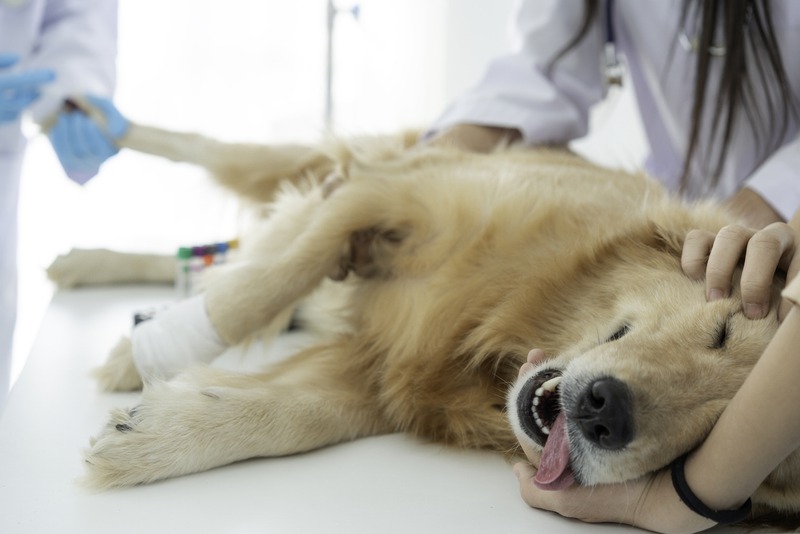
When Should You Rush Your Pet to an Emergency Vet for Surgery?
Owning a pet comes with immense joy, companionship, and responsibility. A pet owner’s critical responsibility is ensuring their furry friend’s health and well-being. Despite our best efforts, pets, like humans, can experience sudden health issues requiring immediate medical attention. Deciding when to rush your pet to an emergency vet for surgery can be challenging and stressful.
Recognizing the signs that your pet may need emergency veterinary surgery is crucial for their health and well-being. Here are some situations and symptoms that indicate you should rush your pet to an emergency vet for potential surgical intervention:
1. Severe Trauma or Injury
-
Visible Fractures: If your pet has a visibly broken bone or cannot use a limb due to a suspected fracture, immediate veterinary attention is necessary. Severe fractures often require surgical repair to stabilize the bone and facilitate proper healing.
-
Open Wounds or Bleeding: Deep lacerations, puncture wounds, or uncontrolled bleeding need urgent care. Surgical intervention may be required to clean, debride, and close the wounds to prevent infection and promote healing.
-
Severe Impact Injuries: Pets involved in car accidents, falls from significant heights, or other high-impact incidents may have internal injuries or fractures that necessitate emergency surgery. In such critical situations, seeking immediate emergency vet care in Blountville, TN, can make a crucial difference in the outcome for your beloved pet.
2. Gastrointestinal Emergencies
-
Foreign Body Ingestion: If your pet has ingested a foreign object and is showing symptoms such as vomiting, gagging, abdominal pain, or difficulty defecating, they may require surgery to remove the object and prevent intestinal blockage or perforation.
-
Bloat (Gastric Dilatation-Volvulus): Bloat is a life-threatening condition where a pet’s stomach fills with gas and twists. Symptoms include a distended abdomen, unproductive vomiting, restlessness, and collapse. Immediate surgical intervention is essential to untwist the stomach and save the pet’s life.
3. Urinary Tract Obstruction
-
Urethral Blockage: Male cats and some dogs are prone to urinary blockages, which can be fatal if untreated. Signs include straining to urinate, vocalizing in pain, frequent attempts to urinate with little or no output, and lethargy. Surgery may be required to remove the obstruction and restore normal urine flow.
4. Reproductive and Obstetric Emergencies
-
Pyometra: This infection of the uterus in unspayed females can be life-threatening. Symptoms include lethargy, fever, abdominal distension, and discharge from the vulva. Emergency surgery to remove the infected uterus is often necessary.
-
Dystocia: Difficulty during labor can endanger both the mother and her offspring. If a pet is unable to deliver puppies or kittens after a reasonable period, is in distress, or shows signs of labor complications, an emergency C-section may be required. In such situations, taking the pet to a vet hospital in Blountville can ensure they receive the urgent medical care they need.
5. Neurological Emergencies
-
Intervertebral Disc Disease (IVDD): Breeds prone to IVDD, such as Dachshunds, may suffer from spinal cord compression. Symptoms include sudden back pain, hind limb weakness, paralysis, or loss of bladder/bowel control. Emergency surgery may be needed to decompress the spinal cord and prevent permanent damage.
6. Severe Infections and Abscesses
-
Severe Abscesses: Large, painful abscesses can result from bites, scratches, or other wounds. If your pet has a swollen, painful area that is hot to the touch or oozing pus, emergency surgical drainage and cleaning may be required to prevent the spread of infection.
7. Severe Respiratory Distress
-
Difficulty Breathing: Pets experiencing severe respiratory distress, indicated by rapid or labored breathing, blue gums, collapse, or inability to breathe, need immediate veterinary care. Conditions like tracheal collapse, laryngeal paralysis, or foreign objects in the airway may require emergency surgery.
8. Eye Injuries
-
Severe Eye Trauma: Trauma to the eye, such as proptosis (eye popped out of its socket) or deep corneal ulcers, requires urgent surgical intervention to save the eye and prevent blindness.
9. Severe Pain and Distress
-
Unrelenting Pain: If your pet is exhibiting signs of severe pain, such as continuous crying, whining, panting, restlessness, or aggression, it may indicate a severe underlying condition that requires veterinary surgery.
10. Swollen Abdomen
-
Abdominal Distension: A suddenly swollen abdomen can indicate internal bleeding, organ torsion, or severe gastrointestinal issues. Immediate veterinary evaluation and potential surgery are essential to address the underlying cause.
Final Thoughts
Awareness of the signs that indicate your pet may need emergency surgery can help you act quickly to seek veterinary care. If your pet shows symptoms or experiences any of these conditions, it is crucial to rush them to an emergency vet immediately. Timely intervention can significantly impact your pet’s outcome and recovery, ensuring they receive the necessary surgical care to address their critical health issues.
